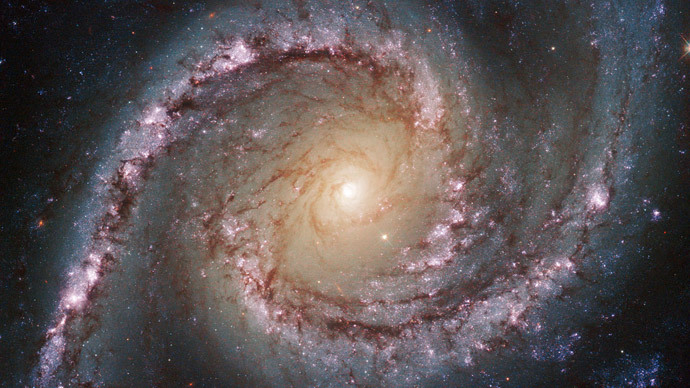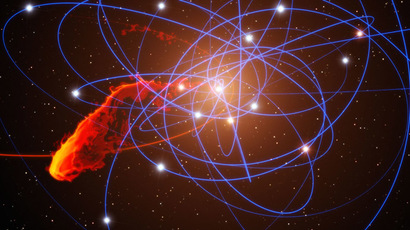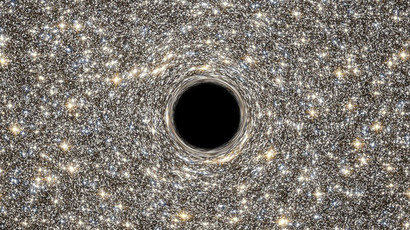Black hole at Milky Way center may be emitting mysterious neutrinos, NASA says

The massive black hole at the heart of our milky galaxy may be churning out peculiar particles called neutrinos, NASA satellites have revealed. If verified, it would be the first time neutrinos have been traced to the darkest regions of spacetime.
The subatomic activity was first detected by three NASA satellites, which observe in x-ray light: the Chandra X-ray Observatory, the Swift gamma-ray mission, and the Nuclear Spectroscopic Telescope Array (NuSTAR), the space agency said in a press release.
READ MORE: NASA finds ‘monster’ black hole in tiny galaxy
Neutrinos, from the Italian “little ones”, live up to their namesake, as they are tiny by even subatomic standards. Carrying no charge, they are unaffected by the electromagnetic forces that affect charged particles such as electrons and protons.
As a result, they can travel across vast expanses of the universe without being absorbed by matter that crosses their path (in fact, billions of them pass through your body every second!) And without an electric charge, they are not deflected by magnetic fields when traveling across the universe.
While the earth is constantly buffeted by neutrinos from the sun, those originating from beyond our solar system can be millions or even billions of times more energetic. Scientists have long puzzled the origin of ultra-high energy and very high-energy neutrinos.
“Figuring out where high-energy neutrinos come from is one of the biggest problems in astrophysics today,” said Yang Bai of the University of Wisconsin in Madison, who co-authored a study about the results published in Physical Review D. “We now have the first evidence that an astronomical source – the Milky Way’s supermassive black hole – may be producing these very energetic neutrinos."

By tracing neutrinos back to black holes, scientists will be one step closer to understanding how cosmic rays are made. These rays wreak havoc on microelectronics and life outside the protection of an atmosphere and magnetic field. Understanding their origin also provides deeper insight into how the universe works.
But because neutrinos pass through matter so easily, it is incredibly difficult to build instruments to detect where they come from.
The IceCube Neutrino Observatory, located under the South Pole, has only managed to detect 36 high-energy neutrinos since it went live in 2010.
According to NASA, by synergizing IceCube's capabilities with the data from the three X-ray telescopes, the scientists were able to seek out violent events in space, which occurred at the same time high-energy neutrinos rained down on Earth.
"We checked to see what happened after Chandra witnessed the biggest outburst ever detected from Sagittarius A (the Milky Way's supermassive black hole)," said co-author Andrea Peterson, also of the University of Wisconsin. "And less than three hours later, there was a neutrino detection at IceCube."
While Sagittarius A is relatively inactive (it is millions of times more massive than our sun though it emits around the same amount of energy), on a daily basis it does emit momentary bursts of light.
The scientists noted that following these black hole flare-ups, neutrinos were detected with Swift and NuSTAR.
"It would be a very big deal if we find out that Sagittarius A produces neutrinos," said co-author Amy Barger of the University of Wisconsin. "It's a very promising lead for scientists to follow."














